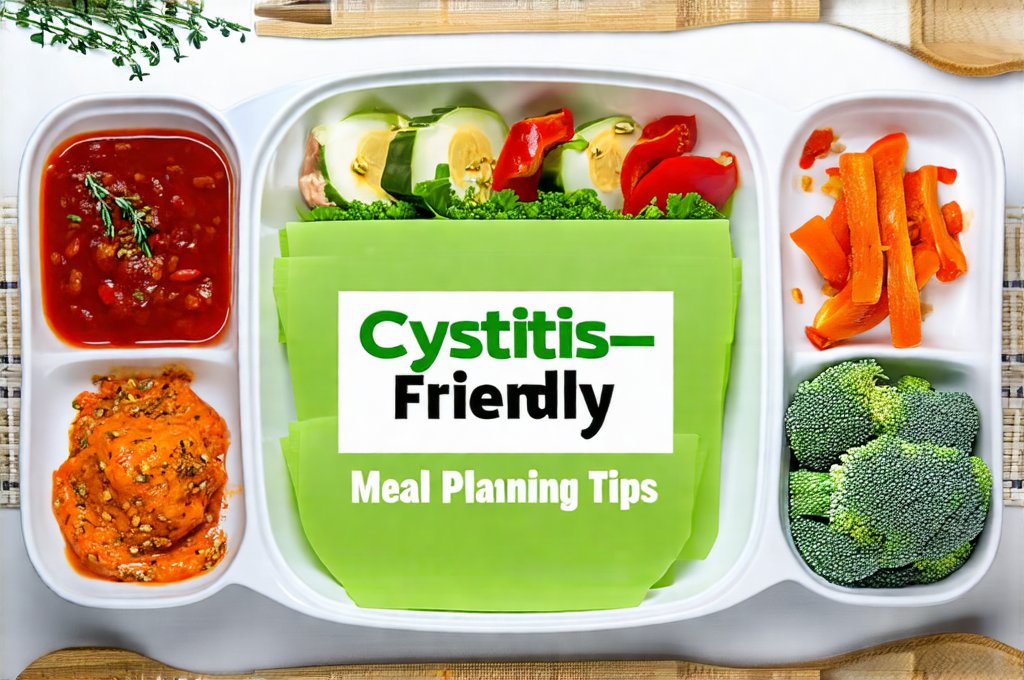Cystitis, an inflammation of the bladder, can be incredibly disruptive to daily life. Beyond the immediate discomfort – frequent urination, burning sensations, and pelvic pain – managing cystitis often involves dietary considerations. Certain foods and beverages can exacerbate symptoms, while others may offer soothing relief or support overall urinary tract health. This isn’t about restrictive dieting; it’s about making informed choices that empower you to feel more comfortable and in control. A thoughtful approach to meal planning becomes a key component of self-care when navigating this condition, allowing individuals to enjoy food without fear of triggering flare-ups. Understanding how to manage your daily routine can be helpful as well – check out these daily planning tips for minimizing bathroom urges.
Many people with cystitis find themselves walking a tightrope between needing nourishment and avoiding irritation. The goal isn’t elimination but mindful inclusion. Understanding which foods commonly trigger symptoms – often acidic or caffeinated items – is the first step. However, individual sensitivities vary greatly; what bothers one person may not affect another. Keeping a food diary can be invaluable in identifying personal triggers. From there, we can focus on building meals around bladder-friendly alternatives and incorporating ingredients known for their potential soothing properties. This article will provide practical tips and strategies to navigate meal planning while living with cystitis, empowering you to create delicious and comfortable eating experiences.
Understanding Bladder Irritation & Food Triggers
The connection between diet and cystitis is complex but well-documented. Certain foods can directly irritate the bladder lining, leading to increased frequency, urgency, and pain. Others may indirectly contribute to inflammation, worsening symptoms over time. Acidic foods are often top culprits – think citrus fruits, tomatoes, vinegar, and spicy dishes. Caffeine, found in coffee, tea, and many sodas, is another common irritant due to its diuretic effect (increasing urination) and potential for bladder sensitivity. Alcohol also falls into this category, as it can dehydrate the body and irritate the urinary tract. Artificial sweeteners are increasingly recognized as potential triggers for some individuals, too.
It’s important to remember that everyone reacts differently. A food diary is your best friend in identifying your specific sensitivities. Track what you eat and drink alongside any symptom flare-ups. Look for patterns – do symptoms consistently worsen after consuming citrus fruits? Does caffeine always lead to increased urgency? This personalized approach is far more effective than simply adhering to a generic list of “bad” foods. Be diligent about recording even seemingly insignificant items, as minor ingredients can sometimes be the culprits. When socializing, it’s helpful to consider meal tips to avoid food triggers while socializing.
Finally, hydration plays a crucial role. While it seems counterintuitive when you’re already experiencing frequent urination, adequate water intake actually helps dilute urine and flush out irritants. Aim for 6-8 glasses of water daily, unless your doctor advises otherwise. Avoiding dehydration is vital in managing cystitis symptoms effectively.
Building Bladder-Friendly Meals
Once you have a better understanding of your triggers, the focus shifts to building delicious and satisfying meals that won’t exacerbate your condition. The foundation of a bladder-friendly diet revolves around whole, unprocessed foods. Lean proteins (chicken, fish, tofu), complex carbohydrates (brown rice, quinoa, sweet potatoes), and non-citrus fruits and vegetables should form the bulk of your diet. Mildly flavored dishes are generally better tolerated than highly spiced ones. Cooking methods also matter – baking, steaming, or poaching are preferable to frying or grilling, which can add unnecessary fats and irritants.
When planning meals, consider incorporating foods known for their potential bladder-soothing properties. Blueberries, for example, contain compounds that may help prevent bacteria from adhering to the urinary tract walls. Pears and bananas are gentle on the digestive system and less acidic than many other fruits. Oatmeal provides fiber and can be soothing to the digestive tract, potentially reducing overall inflammation. Don’t underestimate the power of herbs and spices either – ginger has anti-inflammatory properties, while chamomile tea is known for its calming effects. For men with frequent urge, consider these daily meal tips.
Creating meal plans in advance can take some of the stress out of eating with cystitis. Batch cooking allows you to prepare larger quantities of bladder-friendly meals, ensuring you always have something on hand when symptoms flare up or time is short. Simple swaps can also make a big difference – substituting herbal tea for coffee, using olive oil instead of vinegar in salad dressings, and opting for water over sugary drinks are all easy adjustments that can contribute to significant relief.
Meal Ideas & Snack Options
Here’s a breakdown of practical ideas for incorporating bladder-friendly options into your daily diet:
- Breakfast: Oatmeal with blueberries and a drizzle of maple syrup; pear slices with almond butter; scrambled eggs (prepared without spicy seasonings).
- Lunch: Chicken salad sandwich on whole-wheat bread (using mayonnaise instead of mustard); quinoa salad with roasted sweet potatoes and steamed broccoli; lentil soup.
- Dinner: Baked salmon with roasted asparagus and brown rice; turkey meatballs with zucchini noodles and a tomato-free marinara sauce; tofu stir-fry with mild spices and steamed vegetables.
- Snacks: Banana slices; pear chunks; plain yogurt (check for added sugars); a small handful of almonds or walnuts.
Hydration Strategies Beyond Water
While water remains the cornerstone of hydration, there are other bladder-friendly beverages you can incorporate:
- Herbal teas: Chamomile, ginger, and peppermint tea can be soothing and hydrating. Avoid caffeinated teas.
- Coconut water: A natural electrolyte drink that’s less irritating than many sports drinks.
- Diluted cranberry juice (unsweetened): While often recommended for urinary tract health, it’s important to dilute cranberry juice significantly to reduce acidity. Consult your doctor before including cranberry juice in your diet.
- Infused water: Adding slices of cucumber, berries, or mint to water can make it more appealing and encourage you to drink more.
Navigating Eating Out & Social Situations
Dining out or attending social gatherings can be challenging when managing cystitis. Planning ahead is key. Research restaurant menus online beforehand to identify bladder-friendly options. Don’t hesitate to ask the waiter about ingredients or request modifications – for example, asking for a salad dressing on the side or omitting spicy seasonings from your meal. Bringing a small snack with you can also be helpful if limited options are available. When considering timing meals throughout the day, these meal timing tips may reduce bathroom trips.
When attending social events, consider offering to bring a bladder-friendly dish to share, ensuring you have something safe and enjoyable to eat. Don’t feel pressured to indulge in foods that trigger your symptoms – it’s perfectly acceptable to politely decline or choose alternative options. Prioritizing your well-being is paramount, and surrounding yourself with supportive friends who understand your dietary needs can make a significant difference. Remember, managing cystitis isn’t about deprivation; it’s about making mindful choices that allow you to enjoy life to the fullest while minimizing discomfort.





















